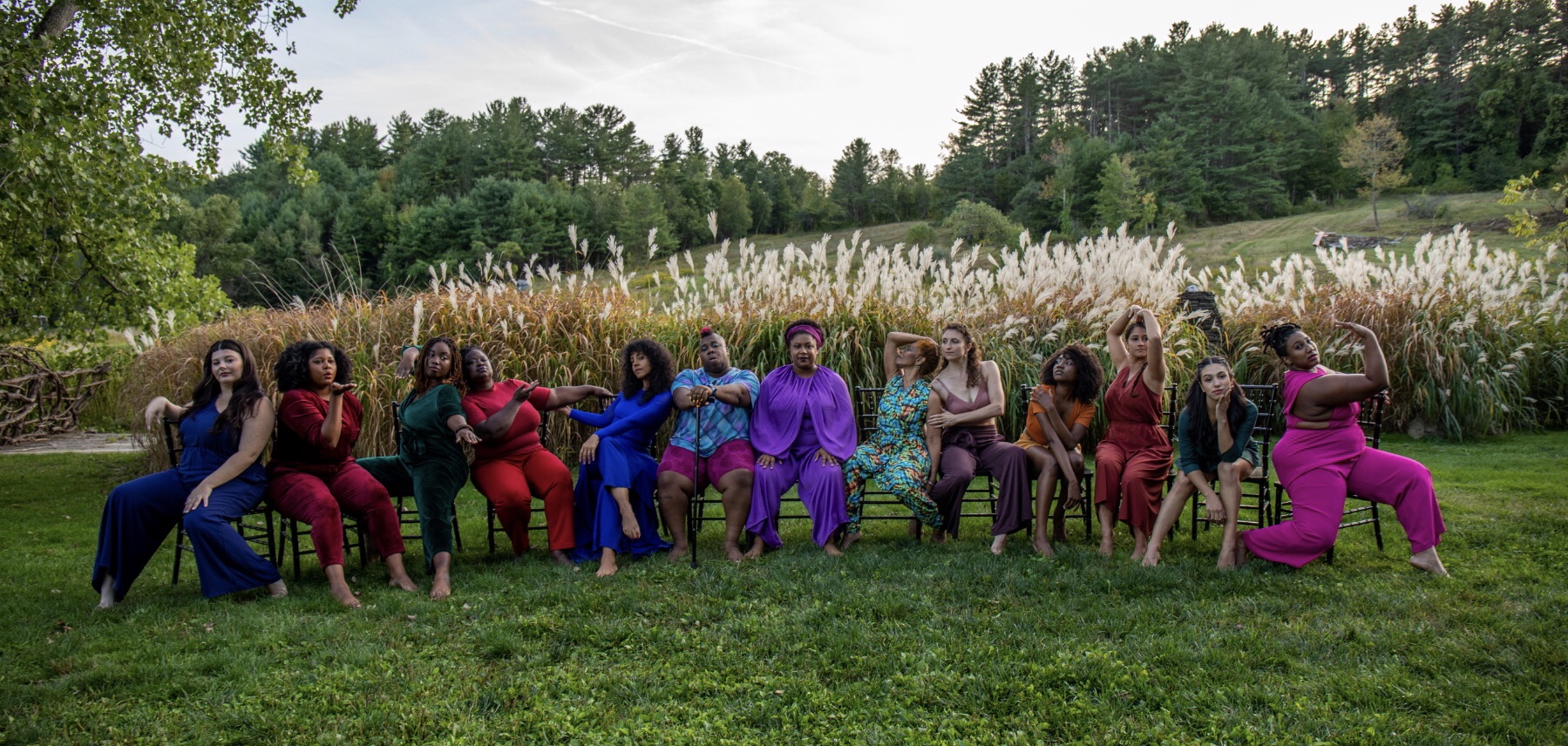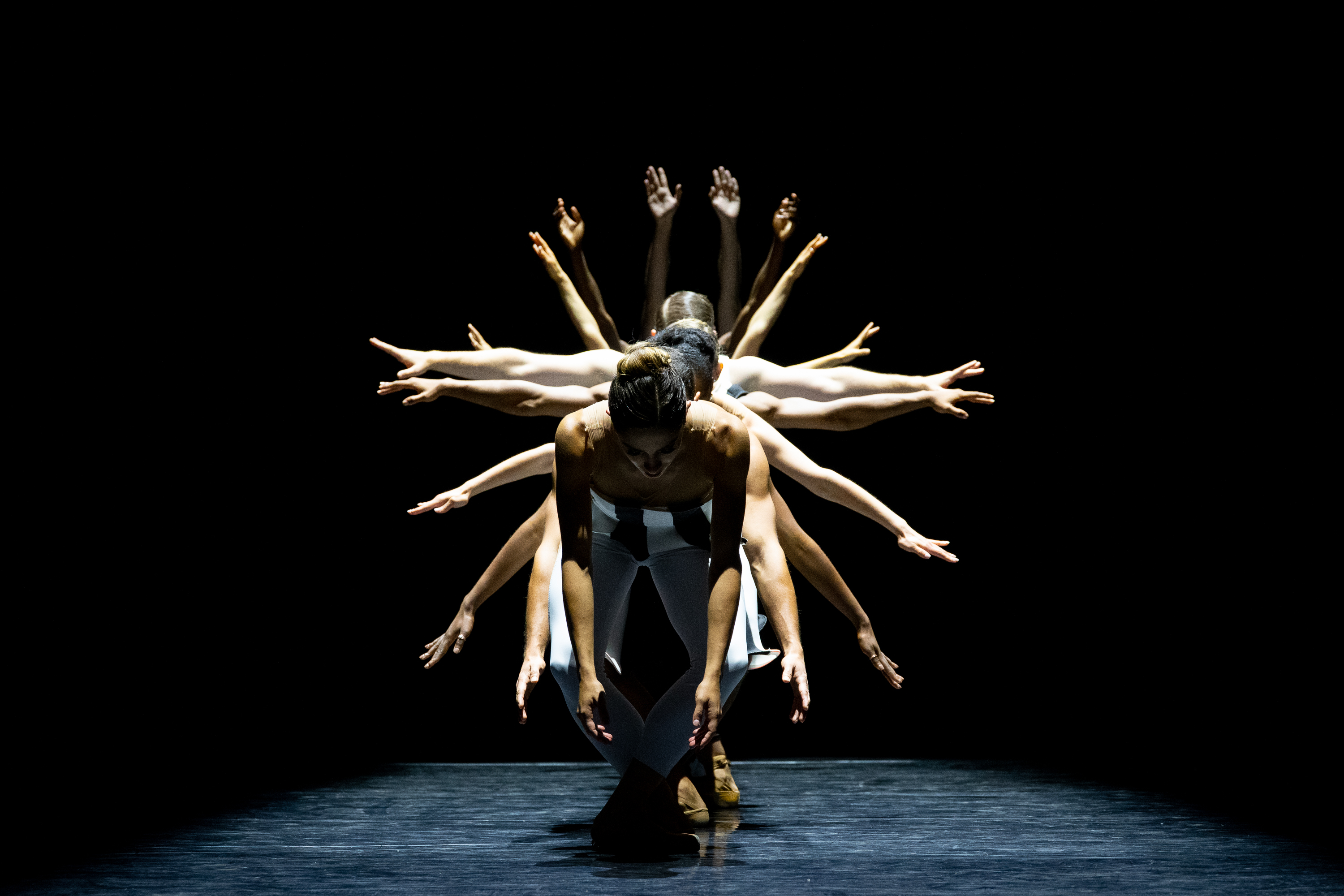BIG DANCE: SHORT FORM (STICK, SLED, SLIPPERS, HEARTH, BOOK, BUNDLE, BALL)
Big Dance Theater
American Dance Institute
Rockville, Maryland
November 6, 7 and 8, 2015
By Luella Christopher, Ph.D.
Wild, wacky and wonderful to such a degree that it’s hard to decide where to focus. Big Dance Theater gleans inspiration from “disciplines of the concise”: diary entries. pencil drawings. novellas, folk tales and thumbnail sketches for starters. Program notes explain that “Big Dance: Short Form” was developed in part during residencies at the Baryshnikov Arts Center and The Kitchen. In toto, five numbers are presented with transitions that are happily distinct largely due to the effective use of voice-over and the exceptional lighting designs of Joe Levasseur.
Most fetching was the last of the five, “Goats”, created by Annie-B Parson and Paul Lazar, a riff on the story of Heidi by Johanna Spyri (1881). Adorable costumes by Oana Botez and snippets of Edvard Grieg’s “Peer Gynt Suite” such as “Anitra’s Dance” recreate the aura of this beloved children’s book. A raggedy man invites the audience to come to the stage. Four dancers in a circle are joined by a fifth who seems like an outsider. Objects are moved around the stage and an extended tableau takes place around a ping-pong table. The characters quickly become recognizable: Heidi (played by Jennie Liu) and her playmate Peter (Enrico Wey), the grandfather with his long stick (Aaron Mattocks), the playwright (Elizabeth DeMent) who intervenes with jarring asides (“we haven’t got time to mark this fucker”) and, finally, a girl lowered onto a faux-wheelchair introduced as the crippled Clara (Tymberly Canale) who is spun around but ignominiously dropped.
My sentimental favorite of the five was “Resplendent Shimmering Topaz Waterfall”, with choreography by Annie-B Parson using “Costume En Face”, notebook notations of work by Tatsumi Hijikata. It showcases Paul Lazar, a founding member of Big Dance Theater, as a bedraggled and expressionless old geezer (costume by Suzanne Bocanegra). His protagonist, a younger character played by Tymberly Canale, both mimicks him when she enters the stage carrying a tattered poncho and strives to engage him, handing him a tree branch that he promptly drops. The old geezer makes very small moves with his hands and bobbles first with his head, then his body. She catches the branch and then raggedy man, wrapping her own cloak around him. They don’t really look at each other. He resorts to sitting with his feet in a bucket of water into which a bag of ice is dripping continuously. In a final, droll disconnect from the choreography up to this point, the old geezer saunters offstage in a suddenly animated conversation with another dancer.
“Short Ride Out (3): He Rides Out” with choreography by Annie-B Parson and costume by Oana Botez is the third in a trilogy of works inspired by Stravinsky’s “Concerto for Two Pianos”. Performer Aaron Mattocks swirls his arms like a squiggle across the torso to thomping music that apes the Stravinsky work. He walks briefly like an old man, then executes some very original variations on temps leve, sometimes with flexed foot, and a jete pulled into the knee. He dons a white tutu and takes off the top, walking in releve in a crouched position. The piece is noteworthy for its use of arms to propel the body from one position to another. The piece achieves a retro look when others come onstage with flowers or sock-curls in their hair to set up the transition to the next component with a microphone over a bucket. The piece excels among the five for the choreographer’s use of expansive technique.
Less compelling to my eye was “The Art of Dancing” with choreography by Annie-B Parson to text from the diaries of Samuel Pepys, 1661-1667. A pair of dancers played by Elizabeth DeMent and Aaron Mattocks in dark curly wigs, one in silver pants, one in gold, dances in tandem – mostly poses. “The dancing master is coming today” and “it is a deadly plague that I find myself to be so jealous of this dancing master”. Both dancers speak and blow into the mic, kneeling and looking at each other. Rolling mikes constitute a very effective staging device that enhances the sound. According to Canale, this will be part of a longer work.
Last is the piece that was presented first, “Summer Forever”, performed by Tymbery Canale to text by Mark Twain and Sibyl Kempson. It has a folkish Slavic flavor with snappy arms, clapping and the flick of the wrist from up to down. Canale sits in a folding chair and begins to speak. Sharp changes in direction give it a resounding bite. “Big Dance Theater: Short Form” transited from its status as an ADI “incubator premiere” to several weeks of performances in January 2016 at The Kitchen in New York City. “What binds all of the various ingredients [of the Big Dance Theater retrospective evening of short works is sharp timing, wit and a captivating clarity of expression” (The New Yorker, January 11, 2016).
Copyright 2016 by Luella Christopher




